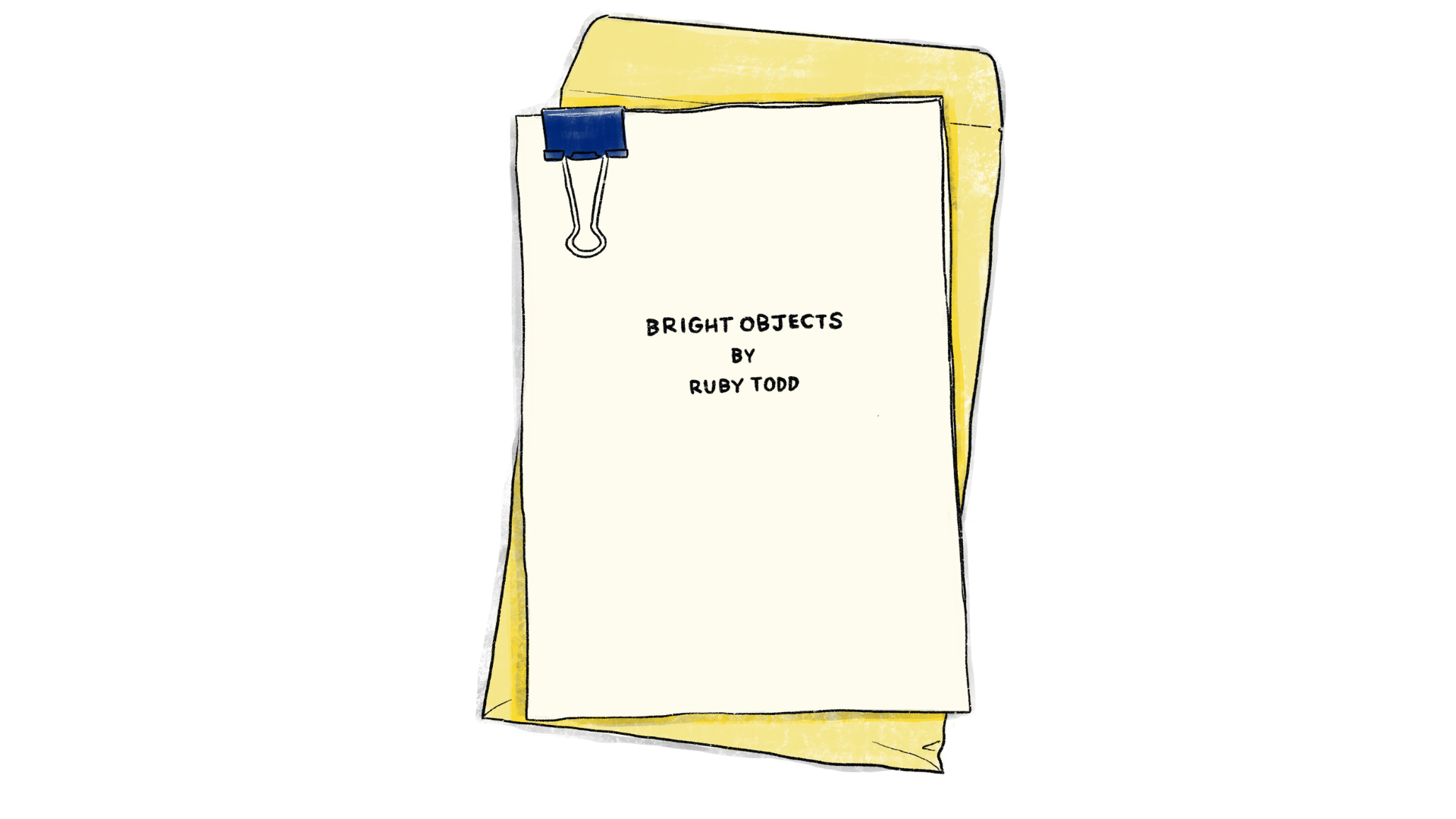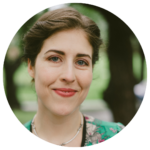Unpublished Manuscript Shortlist

Title: Bright Objects
Author: Ruby Todd
Judges’ report
In the small town of Jericho, Sylvia mourns the tragic death of her husband while supporting her former mother-in-law and working in a funeral home. When she crosses paths with Theo, an American astronomer doing time in regional Australia, Sylvia gains a privileged insight into the newly discovered comet that is fast approaching earth.
Small towns mean everyone knows everyone else’s business. Todd uses this as a starting point to consider not only mourning, but also loyalty, betrayal and whether or not moving on is ever possible. The manuscript is a reminder of the role Australia has played in international space research, and the substantive plot speaks to the larger moment, with people around the world turning to divine signs, spiritual interventions and cult-like conspiracy theories to find meaning.
Despite these heavy themes, Todd’s voice is instantly engaging, buoyant and clever, and there are many comedic elements in the behind-the-scenes funeral home sections. Indeed, the movement between the comic and the cosmic, is one of the more ambitious aspects of this polished and poetic, literary thriller.
Extract
In the midst of winter, I finally learned that there was in me an invincible summer.
– Albert Camus, Actuelles
And so people keep asking and wishing to know whether it’s a portent or a star.
– Seneca, On Comets
I: Dark Skies
Prologue
On the subject of those who narrowly escape death, theorists of trauma debate a fraught question: is the worst thing the initial encounter with extinction, or the survival that comes after? Of course, choosing between the first instance and the second might seem impossible, their separation an artifice in light of how felt experience, through memory, confounds the linear time of external events. It is true that we live those events once, in order, hurtling forward in motion along a one-way track. But how many times do we live them again, invisibly, in the cells of our organs and against the dark screen of inner space? I can only speak for myself, and perhaps any answer at all is a kind of fancy, a coin flipped to test if really the reverse is true. But if pressed, I would say the answer was different each time I died.
The first time, the real battle began with the new dawn of a life suddenly returned to me. The trial of the second time was held entirely in the age-like instant when death, like a dark sun above my body, drew close and passed directly overhead. Between these moments was a passage of nearly three years, which was also the interval between the discovery and closest approach to Earth of an object that had not visited our celestial neighbourhood for more than four thousand years. When I died on a warm night in January 1995, inside a crumpled Toyota on a dark country road north of a town called Jericho—this bright object was being sighted somewhere in the constellation of Virgo, the sign of the maiden, not far from a star named Porrima, after the Roman goddess of prophecy. Hours later, the object was named. When I died again in August 1997, not far away, this time in the floral bedroom of a farmhouse miles from home, as Chopin’s Nocturnes played—the same object, visible to the world for months by then, the talk of backyard barbecues and press junkets in both hemispheres, had reached its maximum magnitude of minus three, the time of its greatest brightness in the sky before it began to retreat from our inner solar system and slowly disappear. If I take my first death to be a kind of beginning, and the second a kind of end, what happened in between is the story I will tell, a story I lived under the eye of a comet, the last great comet of that millennium: the Comet St John.
When I close my eyes and peer as dreamers do into the mind’s darkness, I can see it still—a streak of light suspended in motion, brighter than Sirius, brighter even than Jupiter. It was forty-five light seconds from Earth that second time, on the night I found myself being borne through the blackness of space on my back, the voices of paramedics in my ears like insects chirring, the blue-red headlights bruising the dark. It was the last thing I saw, there above the ghost gumtrees before the van shut and with it, my brain: a torch-star with tails, white and blue-green; a winged creature in flight. Even as it reached nearest to Earth, St John was leaving us behind. I wonder sometimes about the last time it passed over, appearing much the same to the eyes of the Pharaohs and Assyrians as it had to mine, gorgeous and strange, a question. What other lives were altered by its course, what events understood only in the shadow of its passing?
It was only later that I saw St John for what it was, a sign of destruction and dubious rebirth, and then all that had occurred seemed obvious somehow; inevitable as the looping line of its course. But the truth it would deliver in my own small life was there from the start, when we were all blind, when it still hid in the dark skies above our heads. Its very discovery cost a death, but the death that lasted was not my own.
Last night I dreamed of it again, a nucleus of white fire, streaming its tails of dust and ion, and sodium-blue, those compounds we all came from. It took up the whole sky. I couldn’t see my body, and I wondered whether I was beneath it again as I had been that night, blinking prone on the stretcher. I noticed as I stared that it was growing larger, and suddenly I was looking out from inside its light, being carried over the scrubby plains and wide streets of town at a nearness I knew, even as I dreamed, was not real.
*
1.
Some might have thought it unhealthy for a new widow to begin work in a funeral home, especially the same one that just months before had sent off her husband in a premium rosewood casket. But Jericho was a small town, and I was suited to the business. I grew fond of the ritual chores, the sombre quiet, the tight-lipped atmosphere of wood polish and plush carpet and heavy drapes. I enjoyed the feeling of marshalling the stricken troops to church, and the soothing sound of a casket closing. I knew the tone to take with the bereaved, knew how to slide around details as if by way of a network of delicate balustrades, to deflect death. But neither was I afraid of allowing him into the reception room as I served tea to those customers I liked best, who announced themselves with a look that was naked and steely at once, who wanted no part in a pantomime. The work tired my body and stilled my brain, and offered at least some prospect of sleep at the end of the day. I often had the sense of moving through water, and imagined that if I could just accumulate enough days behind me as mindlessly as possible, I might at last look up to find I had gained distance from the horizon of all that had happened, and see the approach of some kind of shore.
About the author
 Ruby Todd is a Melbourne-based writer and teacher with a PhD in Writing and Literature, and a research background in eco-criticism and the poetics of mourning. She is the recipient of the inaugural 2020 Furphy Literary Award, the 2019 Ploughshares Emerging Writer’s Contest award for Fiction, and the 2016 AAWP Chapter One Prize, and was recently shortlisted for the 2022 Bridport Short Story Prize. Previously, she was shortlisted for the Whitmore Press Manuscript Prize, and longlisted for both the Richell Prize and Fish Short Story Prize. In 2021, she completed a residency at La Trobe University. Her stories, poems and essays have appeared in Ploughshares, Crazyhorse, Overland and elsewhere.
Ruby Todd is a Melbourne-based writer and teacher with a PhD in Writing and Literature, and a research background in eco-criticism and the poetics of mourning. She is the recipient of the inaugural 2020 Furphy Literary Award, the 2019 Ploughshares Emerging Writer’s Contest award for Fiction, and the 2016 AAWP Chapter One Prize, and was recently shortlisted for the 2022 Bridport Short Story Prize. Previously, she was shortlisted for the Whitmore Press Manuscript Prize, and longlisted for both the Richell Prize and Fish Short Story Prize. In 2021, she completed a residency at La Trobe University. Her stories, poems and essays have appeared in Ploughshares, Crazyhorse, Overland and elsewhere.
Related Posts

Read
Anne-Marie Te Whiu Receives The Next Chapter Alumni Poetry Fellowship
2 Apr 2024

Read
What's on in April: Resident Organisation Round Up
28 Mar 2024

Read
Blak & Bright First Nations Literary Festival returns in 2024
7 Mar 2024

Read
What's on in March: Resident Organisation Round Up
29 Feb 2024

Read
Hot Desk Extract: International
23 Feb 2024

Read
Hot Desk Extract: The Rooms
23 Feb 2024
Share this content